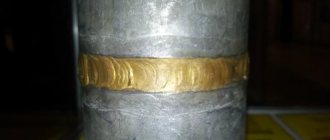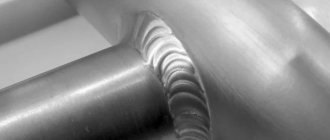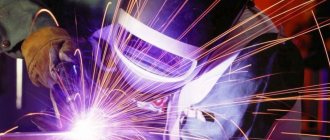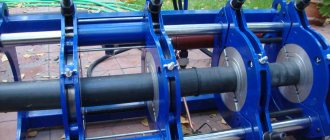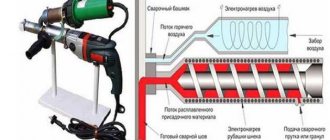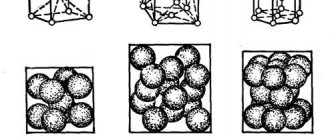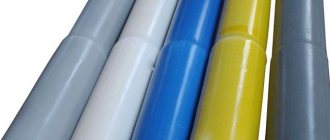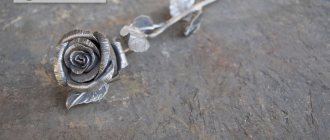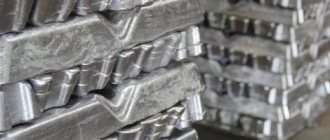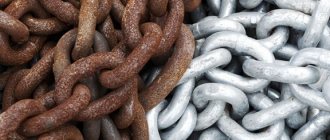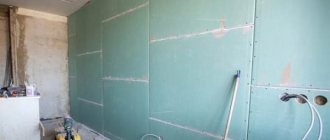05.21.2019 Author: VT-METALL
Issues discussed in the material:
- What are the features of welding non-ferrous metals and alloys
- How copper and its alloys are welded
- How to weld aluminum
- What to consider when welding bronze and brass
- What are the features of titanium welding
At first glance, it may seem that welding non-ferrous metals and their alloys is not a difficult task, since melting them will not be difficult. But the fact is that when non-ferrous metals come into contact with oxygen, they exhibit increased chemical activity. In addition, their surface is covered with an oxide film, which prevents the reliable connection of parts of the structure. Normal heating in air leads to an increase in chemical activity, which is why you will not get the expected smooth seam, but only a melted area covered with a dense layer of oxide.
Peculiarities
Often, when cooking tin bronze, a phenomenon such as the formation of frozen drops is observed. This happens for the reason that fusible fractions float to the surface. Components such as lead and zinc are subject to waste. Their boiling point is lower than that of copper, so natural evaporation occurs.
The type of flame should be controlled. It must be strictly normal. An oxidizing flame burns out the tin, and a carburizing flame causes pores to appear. Acetylene consumption during gas welding should be 70-120 liters per hour per 1 mm of metal sheet thickness. The surface must be in the reduction flame zone, which is 7-10 mm. This is the only way to reduce the degree of tin burnout.
It is recommended to preheat cast bronze parts to a temperature of 450°C degrees. The filler material is BrOTs4-3 or BrOF6.5-0.15 wire. Difficulties in welding aluminum bronze are associated with the formation of an oxide film, which has a high melting point. It can only be dealt with with a special flux. The latter is a substance containing sodium fluoride, sodium chloride, barium chloride and potassium chloride. Silicon bronze, unlike other types of alloys, is weldable well due to the presence of elements such as silicon and manganese.
There are features characteristic of any alloy containing copper. The welder must be aware of these features, because he will certainly encounter certain difficulties. The presence of copper in an alloy determines its physical properties. The thermal conductivity of bronze, like brass, is quite high, as a result of which intensive heat transfer must be taken into account. Rapid crystallization is accompanied by the formation of cracks. Another factor influences here - a high coefficient of thermal expansion. When a metal crystallizes, it “contracts”, resulting in internal stresses.
Bronze is widely used by artists and sculptors in the manufacture of busts or monuments. It is used to make fittings and decorative elements. Welding work must provide not only a reliable connection, but also an aesthetic appearance. The presence of elements such as zinc, tin or lead in alloys largely determines the characteristics of welding work.
The burnout of the listed elements is due to a significant difference in boiling points. After the metal melts in the weld pool, atmospheric oxygen is absorbed. Alloying elements react with it. A film forms on the surface of the bath. At the same time, hydrogen enters the metal, and during crystallization, pores remain. They significantly reduce the quality of the weld.
Expert opinion
Bagrov Viktor Sergeevich
Welder of the highest 6th category. He is considered a master of his craft, knows the intricacies and nuances of the profession.
Welding technology must be strictly followed. Failure to comply with the parameters leads to the appearance of cracks and other defects.
Some problems can be solved by protecting the bath with inert gas. Argon is most often used. All of the above indicates that bronze welding is a rather complex process, so the welder must have certain knowledge and experience.
At home
At home, the easiest way is to use an existing or borrowed blowtorch and tin solder.
And as a flux, that is, a material that separates the welding zone from atmospheric air, you can use cheap and accessible sodium borate. Sometimes special solders from copper and silver are prepared for soldering brass. If you are going to weld brass at home using the electric arc method, you need to think about protective equipment and strict precautions. Zinc vapor poses a truly serious danger to human health - it is poisonous.
Therefore, when welding brass, it is imperative to wear a protective mask, gloves and a respirator. For the same reason, it is better to perform this process outdoors or in rooms with sufficiently powerful hoods.
Less experienced craftsmen will benefit from additional advice. First, it is advisable to practice on an unnecessary piece of brass of suitable sizes. Only after getting good at it and setting the correct settings for the device can you get down to real work.
Those who want to quickly join two metal objects should know what cold welding is. Although this name is not entirely correct. Relatively speaking, hitting two metal plates with a sledgehammer, as a result of which you can get a single product (and this is exactly what they did in ancient times), can also be considered cold welding.
But these days, this is what they call the connection of two metal parts thanks to special compounds, as well as these compounds themselves. They can be purchased at almost any specialty store and allow you to connect, repair and seal brass and bronze products.
The method of application is extremely simple: you need to stir the cold welding composition until you get a homogeneous mass. Then you should apply this mixture to both surfaces that need to be connected and press them tightly against each other for a few seconds .
In fact, cold welding is the glue for metals, and sometimes such glue can actually solve related problems at home. On the other hand, there are situations when real welding is indispensable.
Preparing for work
Today, welding of bronze, like other alloys containing copper, is carried out in three ways: manual arc welding, argon arc welding and gas welding. Preparatory work is defined for each type of work and does not depend on the choice of welding method. The need to prepare metal surfaces is dictated by the requirements for the weld.
First of all, by mechanical processing it is necessary to form edges that will adjoin each other with the maximum area. Then, using sandpaper or any abrasive tool, you will have to polish the ends until a characteristic golden shine appears. This procedure must be performed in any case, since bronze is quickly covered with a layer of oxide, which can prevent the formation of a high-quality seam.
If it is not possible to carry out mechanical treatment, and the edges are in normal condition, then you can get rid of the oxide using a solution of nitric or hydrochloric acid.
Manual arc welding
Bronze welding is most often necessary when carrying out repair work, correcting defects or when surfacing. You can use preheating of the part to 350-450°C degrees, but it should be remembered that at high temperatures the strength of bronze decreases. Manual arc welding is carried out in the lower position. Metal or carbon electrodes are used as consumables.
- When using a metal electrode, a constant welding current of reverse polarity is set.
- Carbon electrodes require straight polarity.
Welding with alternating current is also possible, but for a stable arc the current strength must be significantly higher. If with direct current it is selected based on the calculation of 40 A per 1 mm (electrode diameter), then for alternating current the figure increases to 80 A. The seam is applied continuously, without transverse movements of the electrode.
After welding, cast bronze parts should be annealed at a temperature of 500°C degrees. The rolled product is forged without heating. Phosphor bronze can be arc welded, but it is recommended to use electrodes containing tin, phosphorus and copper. Tin bronze electrodes contain zinc, tin, lead, phosphorus, nickel, iron and copper. Aluminum bronze is welded with copper rods that contain aluminum, manganese and iron. Surfacing of bronze is carried out using bronze electrodes OSTS-5-3-20 or AZH-9-4.
Electric arc
For standard electric arc welding, it is best to use electrodes made of brass wire (and the share of zinc in this wire should be 40%) with inclusions of aluminum, iron, lead, and manganese.
When the device is turned on, a constant electric current of direct polarity must pass through these electrodes. In this case, welding is carried out with a short arc from a position from below.
The arc must be maintained at a current of 250 amperes for electrodes 5 mm long. In this case, the speed of laying the seam can reach 30 cm per minute.
At the end of the main operation, the weld should be additionally forged and heated to a temperature in the range from 600 to 650 °C. This will give the connection greater strength.
Argon-arc
This type of welding is fundamentally similar to manual arc welding. The only difference is that the process occurs in a protective gas environment. Argon is heavier than air, so it forms a protective zone through which atmospheric oxygen does not enter the weld pool. Argon arc welding can be carried out with non-consumable tungsten electrodes or consumable electrodes, the role of which is played by rods.
It is argon arc welding that is most often used when working with bronze and brass. This preference is especially given when the metal thickness exceeds 5 mm. Welding productivity is quite high, but the process itself requires the welder to have certain qualifications. An electric arc formed between the metal surface and the electrode partially melts the edges, after which a connection occurs to form a seam. As mentioned above, preliminary preparation of the edges is required.
There are a number of recommendations that allow you to obtain high-quality connections between parts made of copper alloys.
- It is advisable to form the seam in small sections.
- When the process is finalized, the voltage gradually decreases, and then the arc is moved to the side.
- To prevent evaporation of alloying elements, special additives containing silicon, aluminum or boron are used.
Welding bronze and brass is accompanied by the release of toxic substances, so it is carried out in compliance with all possible safety measures. Argon welding has a number of advantages over other types of joints.
- Obtaining an aesthetic seam.
- Economical process.
- There is no need to clean the part from slag.
- For bronze, argon welding is the most preferable.
- Argon welding can be used to fuse parts, restoring their previous shape (for example, when worn).
- It is possible to work with thin sheet metal.
In an argon environment
Argon welding of brass is the highest quality and most popular option today.
Moreover, this is true not only for brass, but also for other copper alloys. This method is the same arc welding, but in an inert argon gas environment. And here it is possible to use both consumable and non-consumable electrodes.
Tungsten is usually used as a material for non-consumable electrodes. And in most cases, bronze rods of the BrKMts-3-1 brand can become a good filler material.
However, if the brass alloy is very complex, then filler wire should be used from the same material as the metal product itself.
Welding bronze or brass with an argon apparatus is performed in one layer. And at the same time, you need to cook not with a whole seam, but in small separate sections (rollers).
Gas
Gas welding of copper alloys is used primarily in order to minimize the waste of alloying elements. The welding flame is adjusted so that three zones are clearly distinguished. The metal surface should be on the border of the second and third zones. Working with silicon bronze requires an oxidizing flame. It is obtained by burning a mixture of oxygen and acetylene, if the ratio of the first gas to the second is 1.2. Bronze containing aluminum causes many problems during welding, since a film of aluminum oxide is formed, thickening the contents of the weld pool.
In the absence of preliminary and subsequent heat treatment of the seam, the quality and strength of the joint obtained using gas welding is 85% of the strength of the base metal. A good result can only be obtained after forging the seam. Gas welding requires a lot of experience from the master. At low burner speeds, pores may form in the metal. It is necessary to correctly select the burner power, gas composition, based on the type of bronze and the thickness of the workpiece.
